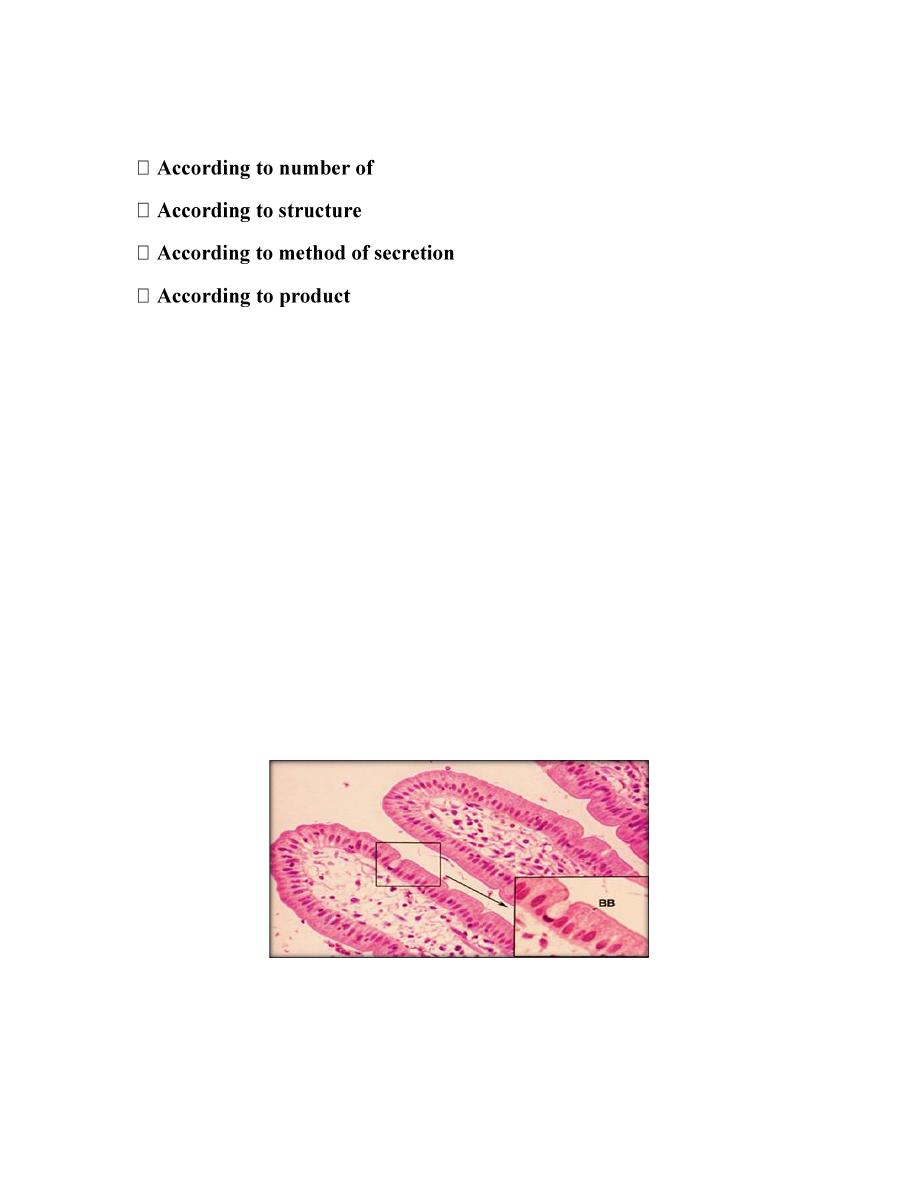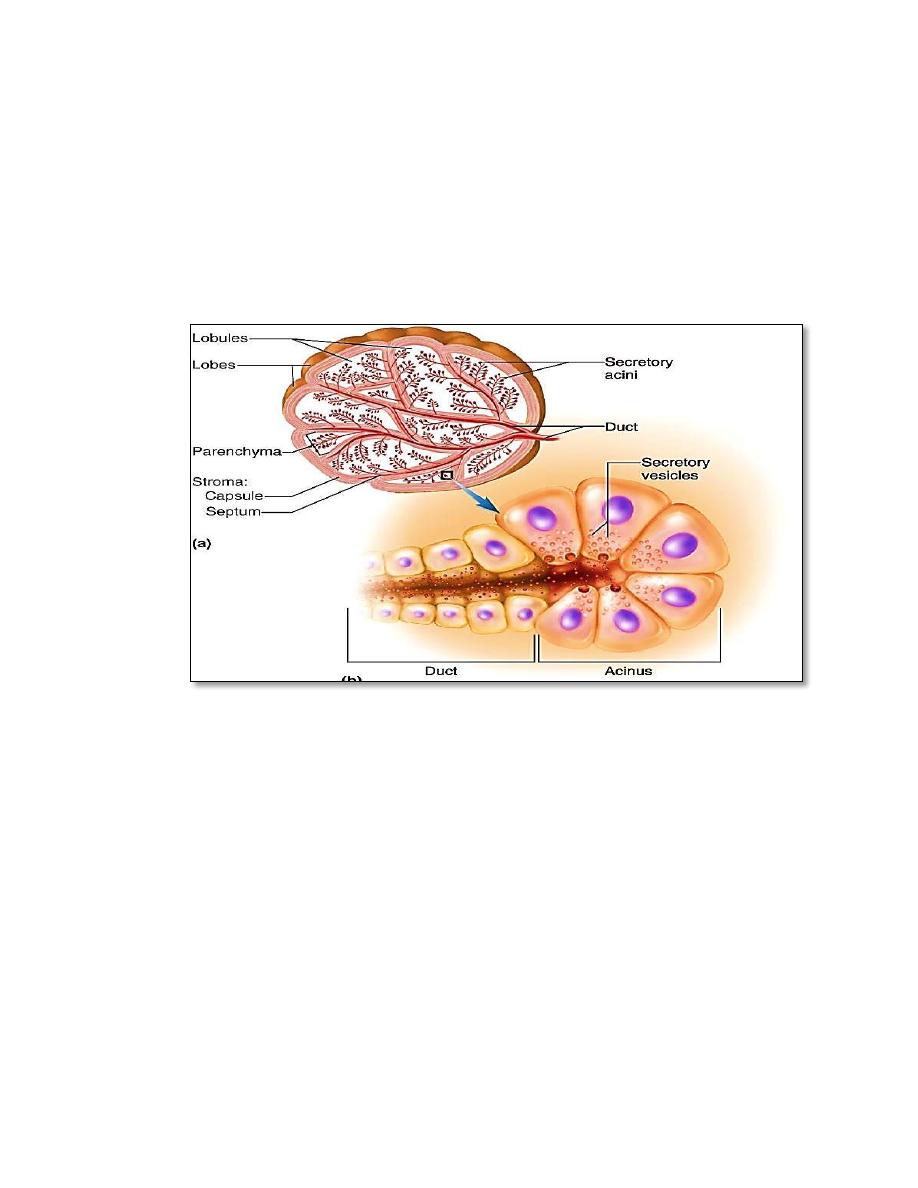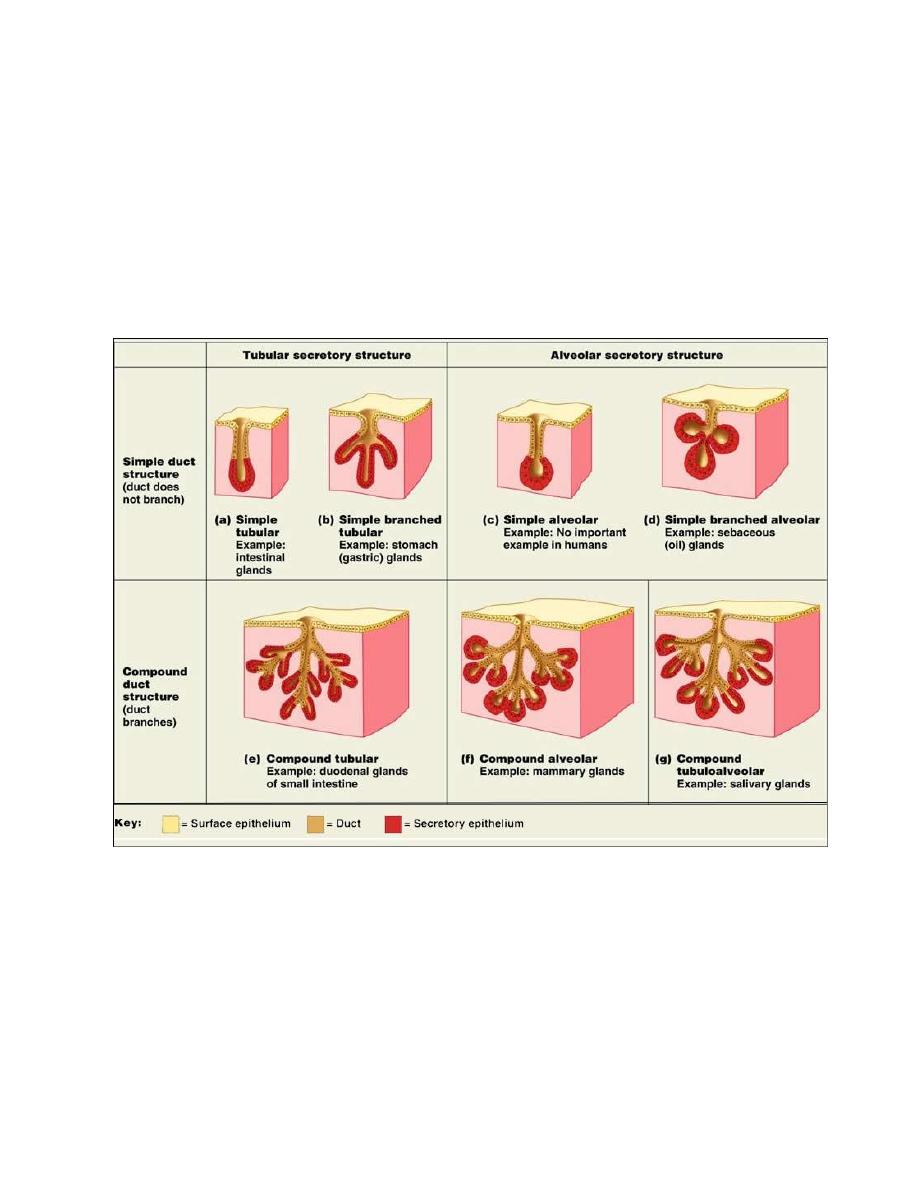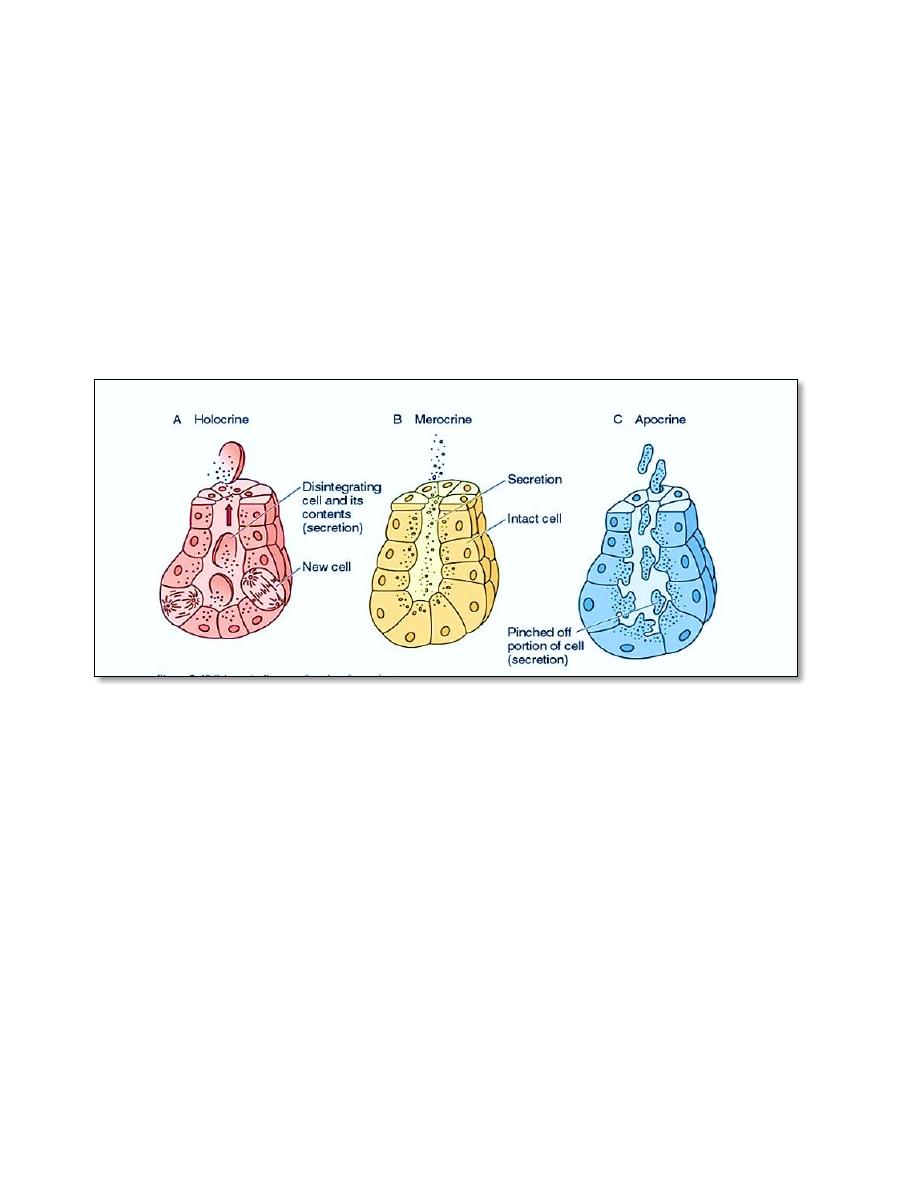
1
Lec.2
Histology
Glandular Epithelium
A gland is one or more cells that produce and secrete a specific product.
The product is always a water-based fluid (aqueous) and usually contains
proteins (the product is referred to as a secretion). Glandular cells obtain
substances needed from blood and transform them (chemically) into a
product that’s discharged from the cell.
Glands include two types:
1. Endocrine Glands
2. Exocrine Glands
Endocrine Glands
Endocrine glands are also called ductless glands because eventually, they
lose their ducts. They produce hormones (chemical messengers ) and secrete
them by exocytosis into the extracellular space. After entering the
extracellular space, they enter the blood or lymphatic fluid and travel to
specific organs. Each hormone makes its target organ respond in a specific
way. Hormones secreted by endocrine glands vary. For instance, one gland
might secrete an amino acid while another secretes glycoproteins or steroids.
The major endocrine glands of the body include pituitary, thyroid,
parathyroid, and pineal glands as well as the ovaries and testes.
Exocrine Glands
Exocrine glands are glands that produce and secrete substances onto an
epithelial surface by way of a duct. Products secreted by exocrine glands
include sweat, oil, mucous, bile, and more. Examples of exocrine glands
include sweat, salivary, mammary, sebaceous, and mucous glands.

2
Classification of Exocrine Glands:
cells
secreted
1-
According to number of cells
Exocrine glands are classified according to the number of
cells in to:
A. Unicellular Exocrine Glands:
Represent the simplest form of exocrine gland, in which a single cell forms
a gland. Important example of unicellular glands include goblet cells (looks
like a goblet). Unicellular glands can be found within the epithelial linings of
the intestinal and respiratory tracts. In humans, unicellular exocrine glands
produce mucin, a complex glycoprotein that dissolves in water. When the
mucin is dissolved, it forms mucous (which protects and lubricates surfaces).
(Goblet Cells)

3
B. Multicellular Exocrine Glands:
Structurally, multicellular exocrine glands are more complex than
unicellular glands. They have two main parts: an epithelium-derived duct
and a secretory unit (made of secretory cells). In almost all cases, the
secretory unit is surrounded by connective tissue. The connective tissue
supplies the secretory unit with blood vessels and nerve fibers . It also
forms a fibrous capsule that extends into the gland and divides it into lobes
.
(Multicellular Exocrine Glands)
2-According to structure:
Multicellular exocrine glands are structurally classified depending
on the structure of their duct into:
1. Simple multicellular exocrine glands: Simple glands have one un
branched duct.
2. Compound multicellular exocrine glands: Compound glands have ducts
that branch repeatedly.

4
They are further categorized according to the morphology of their
secretory units as:
1. Tubular – secretory portion is shaped like a tube .
2. Acinar (also called alveolar) – secretory portion is saclike or
shaped
like a flask.
3. Tubuloacinar (tubuloalveolar) – has both tubular and acinar
secretory unit.
(Classification of Exocrine Glands According to structure)
2-
According to method of secretion
Exocrine glands are classified according to the mode or way
in which the secretory products leave the cell, into:

5
A. Holocrine glands: The product of secretion is shed with the whole cell,
and the cell division in such gland must be rapid to replace cells lost in
secretion (e.g. sebaceous glands ).
B. Merocrine glands: In merocrine glands, the secretory granules leave the
cells by exocytosis with no loss of other cellular material, (e.g. pancreas and
salivary glands).
C. Apocrine glands: the secretory product is discharge together with parts
of the apical cytoplasm. The cell then passes through another secretory cycle
after a short recovery period (e.g. the mammary glands).
(Classification of Exocrine Glands According to method of secretion)
3-
According to product secreted
Exocrine glands are classified according to the nature of their
secretion , into
:
A) Serous glands : Secretes proteins , often enzymes e.g. : Chief cells of
stomach
B) Mucus Glands : Secretes mucus e.g.: esophageal glands ,pyloric glands
C) Mixed Glands : Secretes both proteins and mucous e. g . : Salivary
glands
D) Sebaceous Glands : Secretes oil / lipids

6
